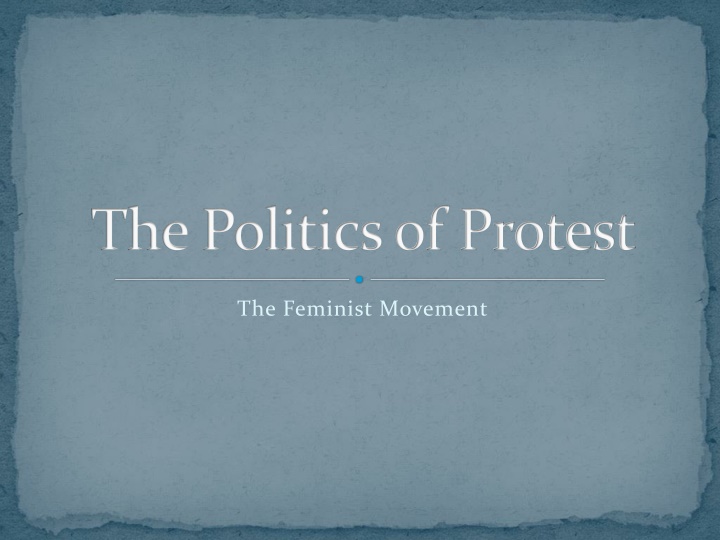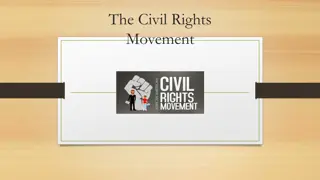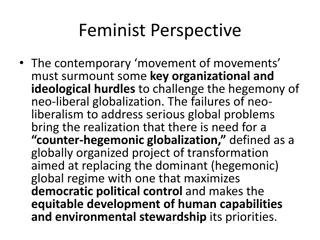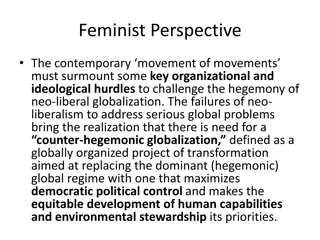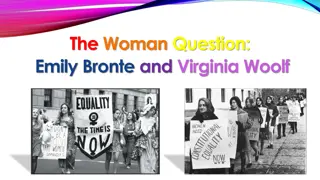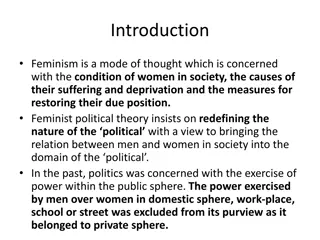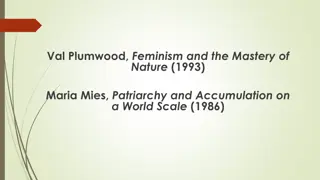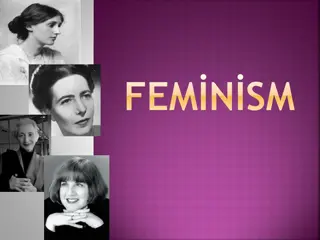The Evolution of the Feminist Movement: From Struggles to Triumphs
Chronicling the history of the feminist movement, this content highlights key moments such as the split in views on protective legislation for women, the reawakening of the movement in the 1960s, the formation of the National Organization for Women (NOW), and successes in achieving workplace rights, equality in education, and the landmark Roe v. Wade decision. The narrative captures the journey of women's empowerment, from recognizing inequalities to advocating for change and achieving significant victories.
Download Presentation

Please find below an Image/Link to download the presentation.
The content on the website is provided AS IS for your information and personal use only. It may not be sold, licensed, or shared on other websites without obtaining consent from the author.If you encounter any issues during the download, it is possible that the publisher has removed the file from their server.
You are allowed to download the files provided on this website for personal or commercial use, subject to the condition that they are used lawfully. All files are the property of their respective owners.
The content on the website is provided AS IS for your information and personal use only. It may not be sold, licensed, or shared on other websites without obtaining consent from the author.
E N D
Presentation Transcript
The Politics of Protest The Feminist Movement
A Weakened Womens Movement Those who worked outside the home were recognizing their unequal status as reflected in lower pay and fewer opportunities. In 1920, the women s movement opposing views on laws protecting women, split into two camps. The National Woman s party, opposed protective legislation for women. The onset of World War II provided women with greater opportunity.
The Womens Movement Reawakens Fighting for Workplace Rights Two forces helped bring the women s movement to life again. President s Commission on the Status of Women Congress gave women another boost by including them on the Civil Rights Act. Although about 47 percent of American women were in the work force in the 1960s, generally they were shut out of higher paying jobs and prestigious professions.
The Womens Movement Reawakens The Feminine Mystique Betty Friedan and others set out to form the National Organization for Women (NOW). Freidan had traveled around the country interviewing the women who had graduated with her from Smith College in 1942. She found that while most of these women reported having everything they could want in life, they still felt unfulfilled. She wrote about this in her book titled The Feminine Mystique.
The Womens Movement Reawakens The Time is NOW June 1966, Friedan returns to a thought that she had been considering, the need for women to form a national organization. Freidan and others then set out to form the National Organization for Women (NOW). In October 1966, a group of 300 women and men held the founding conference of NOW. The new organization responded to frustrated housewife's by demanding greater educational opportunities for women. Ms., the editor of the new magazine was Gloria Steinem.
Successes and Failures Striving for Equality in Education Prohibited gender discrimination. Title IX, prohibited federally funded schools from discriminating against girls and young women in nearly all aspects of its operations. Many schools implemented this new law slowly, but women now had federal law on their side.
Successes and Failures Roe v.Wade One of the most important goals for many women activists was the repeal of laws against abortion. In the late 1960 s, some states began adopting more liberal abortion laws. Roe v. Wade-1973 State governments could not regulate abortion during the first three months of pregnancy. Those in favor of protecting abortion rights cheered Roe v. Wade as a victory, but the issue was not settled. After the Roe v. Wade ruling, the two sides began an impassioned battle that continues today.
Successes and Failures The Equal Rights Amendment In 1972, Congress passed the Equal Rights Amendment (ERA). However, not enough states ratified the amendment to make it a part of the constitution.
Successes and Failures The Impact of the Women s Movement The women s movement brought about profound changes in society. Equal Employment Opportunity Act: Outlawed job discrimination by private employers based on gender. Equal Pay Act: outlawed paying men more than women Even though the women s movement helped change social attitudes toward women, a gap between men and women still exists.
Essay Question Describe some examples of stereotypes and unequal treatment of women that reawakened the women s movement in the 1960s.
Essay Question and Answer Describe some examples of stereotypes and unequal treatment of women that reawakened the women s movement in the 1960s. By the early 1960s, many women were increasingly resentful of old stereotypes of a world where newspaper ads separated jobs by gender, where clubs refused them separate memberships, where banks routinely denied them credit, and where they often were paid less for the same work. Generally, women found themselves shut out of the higher-paying and prestigious professions, such as law, medicine, and accounting. About three-fourths of the women int eh workforce in the 1960s worked in lower=paying and routine clerical, sales, or factory jobs, or as cleaning women and hospital attendants. Even in the civil rights and antiwar movements, women were often restricted to menial tasks and rarely had a say in any policy decisions. Awareness of these kinds of inequalities sparked a new and energetic feminist movement.
